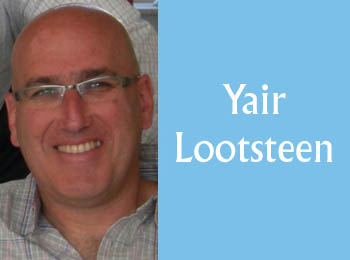These are promising times for those of us who believe Jewish pluralism is attainable in Israel.
For Jews in the Diaspora, Jewish diversity isn’t an issue, and all streams of Judaism live in relative harmony, with a semblance of mutual respect. That isn’t the case here in Israel, where Jewish religious life has been monopolized by the Orthodox and ultra-Orthodox since the state’s inception. Reform and Conservative rabbis aren’t recognized as such by the state, nor are the marriages, conversions and other religious services that they provide.
And in a country with no separation of “synagogue and state,” that means money. Big money. State coffers pay Orthodox rabbis’ salaries, as well as to build synagogues and yeshivas and for their upkeep, and much more. Reform and Conservative communities receive almost no taxpayer support, and the meagre backing they do get is the result of legal battles pursued by these movements and organizations such as the Reform Israel Religious Action Center.
But cautious winds of change are in the air. In the last few months, I’ve attended Rosh Chodesh services at the Western Wall in support of the Women of the Wall. These women have been welcoming the arrival of Hebrew months in prayer at the Kotel for more than two decades. Their steadfast physical and legal battles to allow women to pray at the wall, covered in tallitot and kippot, some with tfillin, have been pivotal in defining the need for fundamental change.
Their success has also been instrumental in our government’s more focused realization that Israel’s existing Jewish religious paradigm not only alienates liberal and secular Israelis, but also millions of Jews around the world who rightly find it unacceptable that Israel is the only western nation where Jews of different persuasions aren’t treated equally.
Prime Minister Benjamin Netanyahu understood this when he accepted Jewish Agency chair Natan Sharansky’s proposal to create a third section of the Western Wall where men and women can pray together.
Whether that section of the Wall is ever established is far from certain, not only because of Jewish opposition. UNESCO, the Waqf (the Muslim religious organization that oversees the Temple Mount) and the Palestinian Authority, to name but a few, have all expressed concern.
And since Sharansky’s proposal was made public and with no viable option yet in place, the Jerusalem District Court has ordered police to protect the Women of the Wall when they come to pray on Rosh Chodesh and not to arrest them, as they have in the past, if they dared to put on tallitot at the Wall.
A month and a half ago, on the first day of Sivan, a few hundred women and their supporters arrived at the Kotel just before 7 a.m. They found themselves surrounded by thousands of haredi men and women who tried to muffle their prayers, unsuccessfully I must say, by shouting profanities, throwing cups of water and blowing whistles.
The cursing continued as we were escorted by police out of the Dung Gate to buses that authorities had assembled to get us out of harm’s way. It continued as we made our way up Mount Zion and had rocks hurled at us. It wasn’t pleasant watching a rabbi lie on top of her kids on the floor of the bus to protect them. The last time I experienced such a barrage was while driving through Gaza some 20 years ago.
There have been other successes. Early in 2012, four Conservative and Reform rabbis and their Jerusalem congregations petitioned the High Court of Justice to demand they be appointed by the municipality and the Ministry of Religious Affairs to provide religious services to people seeking more liberal approaches to Judaism.
In a dramatic turn of events, in late May, the state informed the court that criteria were being developed to fund congregational rabbis, regardless of their affiliation. If implemented in good faith, this could pave the way to state funding for Reform and Conservative rabbis.
The haredim are feeling the winds of change and are worried. Perhaps more than anything else, they’re concerned by the government’s apparently earnest intention to enlist more of them into the army. But they’re frightened by changes afoot regarding the Kotel as well as other religious spheres of influence. They fear losing their hegemony.
It won’t happen quickly, but I’m an optimist. Someday soon we’ll able to say there really is more than one way to be Jewish in Israel.
Amen.
